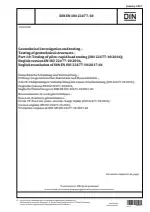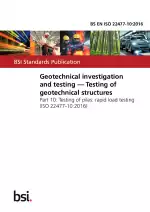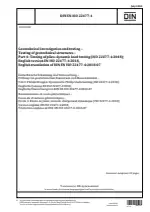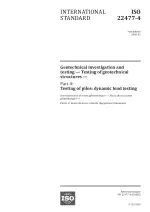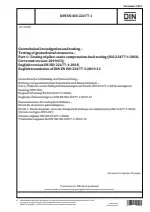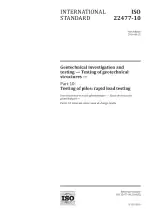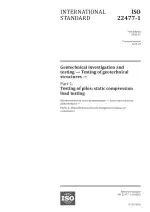Geotechnical Investigation and Testing - Testing of Geotechnical Structures - Part 10: Testing of Piles: Rapid Load Testing
Also Known As:
The DIN EN ISO 22477-10 standard focuses on the testing of geotechnical structures, specifically piles, through the use of rapid load testing. This standard provides specifications for the execution of rapid pile load tests, in which a single pile is subjected to an axial load in compression of intermediate duration.
The main purpose of these tests is to measure the load-displacement behavior of the pile under rapid loading conditions and to assess its static behavior. The standard distinguishes between investigation tests and control tests. Investigation tests involve loading a sacrificial pile up to its ultimate limit state, while control tests involve loading the pile up to a specified load that exceeds the serviceability limit state.
The rapid load testing outlined in this standard allows for the introduction of various effects, such as rate effects (including creep), excess pore water pressures, and inertia effects (due to acceleration). These effects may differ from what would be expected in an equivalent static load test.
| Descriptors | Acceptance inspection, Civil engineering, Composition of the ground, Compression loading, Construction, Construction operations, Construction systems parts, Construction works, Definitions, Displacements, Geotechnics, Inspection, Investigations, Load measurement, Loading, Loading tests, Piles, Site investigations, Special geotechnical work, Specification (approval), Static loading, Suitability, Surveillance (approval), Test loading, Testing, Workmanship, Stress |
| ICS Codes | 93.020 - Earthworks. Excavations. Foundation construction. Underground works |
| Language(s) | English |
| File Size | 7.1 MB |

